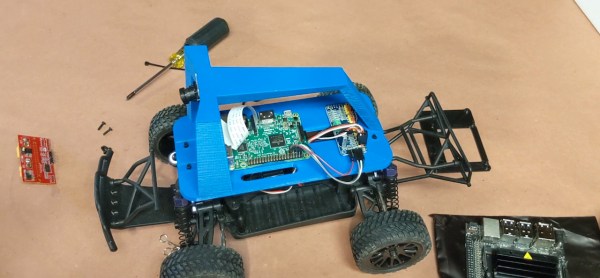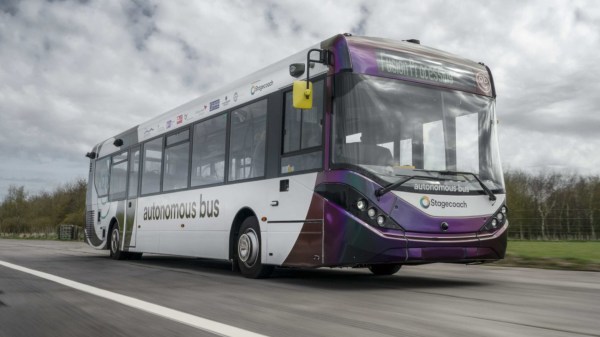We’ve devoted a fair amount of virtual ink here to casting shade at self-driving vehicles, especially lately with all the robo-taxi fiascos that seem to keep cropping up in cities serving as testbeds. It’s hard not to, especially when an entire fleet of taxis seems to spontaneously congregate at a single point, or all it takes to create gridlock is a couple of traffic cones. We know that these are essentially beta tests whose whole point is to find and fix points of failure before widespread deployment, and that any failure is likely to be very public and very costly. But there’s someone else in the self-driving vehicle business with way, WAY more to lose if something goes wrong but still seems to be nailing it every day. Of course, we’re talking about NASA and the Perseverance rover, which just completed a record drive across Jezero crater on autopilot. The 759-meter jaunt was completely planned by the onboard AutoNav system, which used the rover’s cameras and sensors to pick its way through a boulder-strewn field. Of course, the trip took six sols to complete, which probably would result in negative reviews for a robo-taxi on Earth, and then there’s the whole thing about NASA having a much bigger pot of money to draw from than any start-up could ever dream of. Still, it’d be nice to see some of the tech on Perseverance filtering down to Earth.
self-driving53 Articles
Hackaday Links: September 17, 2023
OK, it’s official — everyone hates San Francisco’s self-driving taxi fleet. Or at least so it seems, if this video of someone vandalizing a Cruise robotaxi is an accurate reflection of the public’s sentiment. We’ve been covering the increasingly fraught relationship between Cruise and San Franciscans for a while now — between their cabs crashing into semis and being used for — ahem — non-transportation purposes, then crashing into fire trucks and eventually having their test fleet cut in half by regulators, Cruise really seems to be taking it on the chin.
And now this video, which shows a wannabe Ninja going ham on a Cruise taxi stopped somewhere on the streets of San Francisco. It has to be said that the vandal doesn’t appear to be doing much damage with what looks like a mason’s hammer; except for the windshield and side glass and the driver-side mirror — superfluous for a self-driving car, one would think — the rest of the roof-mounted lidars and cameras seem to get off lightly. Either Cruise’s mechanical engineering is better than their software engineering, or the neo-Luddite lacks the upper body strength to do any serious damage. Or maybe both.
Teaching A Mini-Tesla To Steer Itself
At the risk of stating the obvious, even when you’ve got unlimited resources and access to the best engineering minds, self-driving cars are hard. Building a multi-ton guided missile that can handle the chaotic environment of rush-hour traffic without killing someone is a challenge, to say the least. So if you’re looking to get into the autonomous car game, perhaps it’s best to start small.
If [Austin Blake]’s fun-sized Tesla go-kart looks familiar, it’s probably because we covered the Teskart back when he whipped up this little demon of an EV from a Radio Flyer toy. Adding self-driving to the kart is a natural next step, so [Austin] set off on a journey into machine learning to make it happen. Having settled on behavioral cloning, which trains a model to replicate a behavior by showing it examples of the behavior, he built a bolt-on frame to hold a steering servo made from an electric wheelchair motor, some drive electronics, and a webcam attached to a laptop. Ten or so human-piloted laps around a walking path at a park resulted in a 48,000-image training set, along with the steering wheel angle at each point.
The first go-around wasn’t so great, with the Teskart seemingly bent on going off the track. [Austin] retooled by adding two more webcams, to get a little parallax data and hopefully improve the training data. After a bug fix, the improved model really seemed to do the trick, with the Teskart pretty much keeping in its lane around the track, no matter how fast [Austin] pushed it. Check out the video below to see the Teskart in action.
It’s important to note that this isn’t even close to “Full Self-Driving.” The only thing being controlled is the steering angle; [Austin] is controlling the throttle himself and generally acting as the safety driver should the car veer off course, which it tends to do at one particular junction. But it’s a great first step, and we’re looking forward to further development.
Hackaday Links: August 20, 2023
In some ways, we’ve become a little jaded when it comes to news from Mars, which almost always has to do with the Ingenuity helicopter completing yet another successful flight. And so it was with the report of flight number 54 — almost. It turns out that the previous flight, which was conducted on July 22, suffered a glitch that cut the flight short by forcing an immediate landing. We had either completely missed that in the news, or NASA wasn’t forthcoming with the news, perhaps until they knew more. But the details of the error are interesting and appear related to a glitch that happened 46 flights before, way back in May of 2021, that involves dropped frames from the video coming from the helicopter’s down-facing navigational camera. When this first cropped up back on flight six, it was only a couple of missed frames that nearly crashed the craft, thanks to confusion between the video stream and the inertial data. Flight engineers updated the aircraft’s software to allow for a little more flexibility with dropped frames, which worked perfectly up until the aborted flight 53.
Self-Driving Library For Python
Fully autonomous vehicles seem to perennially be just a few years away, sort of like the automotive equivalent of fusion power. But just because robotic vehicles haven’t made much progress on our roadways doesn’t mean we can’t play with the technology at the hobbyist level. You can embark on your own experimentation right now with this open source self-driving Python library.
Granted, this is a library built for much smaller vehicles, but it’s still quite full-featured. Known as Donkey Car, it’s mostly intended for what would otherwise be remote-controlled cars or robotics platforms. The library is built to be as minimalist as possible with modularity as a design principle, and includes the ability to self-drive with computer vision using machine-learning algorithms. It is capable of logging sensor data and interfacing with various controllers as well, either physical devices or through something like a browser.
To build a complete platform costs around $250 in parts, but most things needed for a Donkey Car compatible build are easily sourced and it won’t be too long before your own RC vehicle has more “full self-driving” capabilities than a Tesla, and potentially less risk of having a major security vulnerability as well.
Hackaday Links: March 5, 2023
Well, we guess it had to happen eventually — Ford is putting plans in place to make its vehicles capable of self-repossession. At least it seems so from a patent application that was published last week, which reads like something written by someone who fancies themselves an evil genius but is just really, really annoying. Like most patent applications, it covers a lot of ground; aside from the obvious capability of a self-driving car to drive itself back to the dealership, Ford lists a number of steps that its proposed system could take before or instead of driving the car away from someone who’s behind on payments.
Examples include selective disabling conveniences in the vehicle, like the HVAC or infotainment systems, or even locking the doors and effectively bricking the vehicle. Ford graciously makes allowance for using the repossessed vehicle in an emergency, and makes mention of using cameras in the vehicle and a “neural network” to verify that the locked-out user is indeed having, say, a medical emergency. What could possibly go wrong?
Driverless Buses Take To The Road In Scotland
Scotland! It’s the land of tartans, haggis, and surprisingly-warm kilts. It’s also ground zero for the first trial of full-sized driverless buses in the United Kingdom.
It’s not just automakers developing driverless technologies. Transit companies are desperate to get in on the action because it would completely upend their entire existing business structure. Now that self-driving buses are finally approaching a basic level of competence, they’re starting to head out to haul passengers from A to B. Let’s look at how the UK’s first driverless bus project is getting on out in the real world.
Continue reading “Driverless Buses Take To The Road In Scotland”














